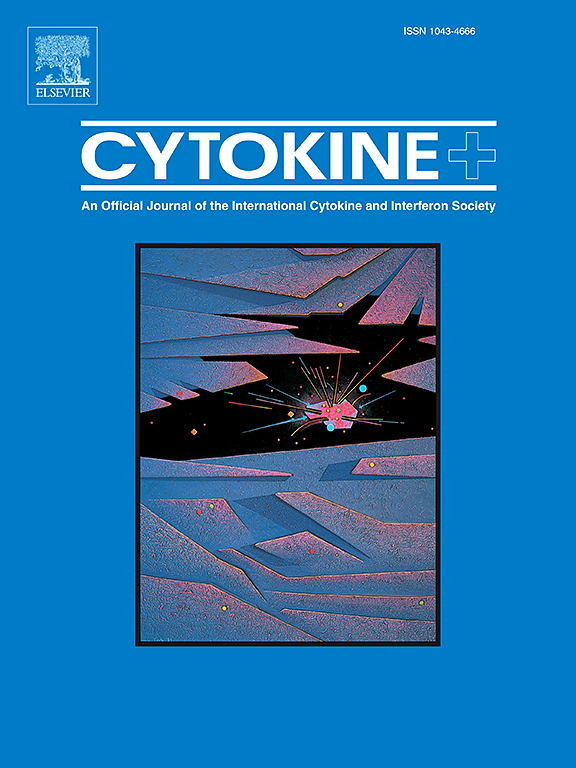成人脓毒症患者入院后6小时血管活性药物评分、NT-proBNP和血乳酸水平的预后价值:一项单中心、回顾性研究
IF 3.7
3区 医学
Q2 BIOCHEMISTRY & MOLECULAR BIOLOGY
引用次数: 0
摘要
脓毒症是一种普遍而严重的疾病,由对特定感染因子的过度免疫反应引起。脓毒症严重程度的分类在早期识别和结构化管理中起着重要作用,有助于预测死亡风险的增加。尽管在脓毒症的诊断和治疗指导中使用了许多生物标志物,但脓毒症的早期识别和预测仍然面临重大挑战。目的探讨血管活性-肌力评分(VIS)、n端前b型利钠肽(NT-proBNP)及入院后6 h血乳酸对成人脓毒症患者预后的价值。方法对177例成人脓毒症患者进行横断面研究。根据入院后28天的预后,将患者分为死亡组(n = 52)和生存组(n = 125)。收集两组临床资料。采用单因素分析和二元logistic回归分析成人脓毒症患者预后不良的独立危险因素。采用受试者工作特征曲线(ROC)分析,确定入院后6 h VIS、NT-proBNP、血乳酸水平对成人脓毒症患者的预测价值。采用Kaplan-Meier法分析成人脓毒症患者入院后6 h VIS、NT-proBNP、血乳酸水平与生存预后的关系。Vis (or: 7.117;95% ci: 1.648-30.738;P = 0.009), NT-proBNP (OR: 1.296;95% ci: 1.026-1.637;P = 0.030), SOFA评分(OR:1.232;95% ci: 1.031-1.473;p = 0。02)和入院后6 h血乳酸(OR: 3.484;95% CI: 1.416 - 8.573;P = 0.007)是成人脓毒症预后不良的独立危险因素。2. 入院后6 h VIS、NT-proBNP、血乳酸与SOFA评分呈正相关(r = 0.255、0.388、0。89, P <;0.05)。3. ROC曲线分析显示,成人脓毒症患者入院后6 h VIS、NT-proBNP、血乳酸预测预后不良的曲线下面积(AUC)分别为0.673、0.790、0.702。截止值分别为3.86、1.69、3.35时,敏感性分别为40.5%、71.8%、59.3%,特异性分别为88.2%、65.8%、72.9%,约登指数分别为0.288、0.501、0.324。3. Kaplan-Meier分析显示,VIS = 1.69与VIS≤1.69患者的生存预后差异有统计学意义(Log-rank χ2 = 18.404, P <;0.001), NT-proBNP >;3.86和NT-proBNP≤3.86 (Log-rank χ2 = 38.282, P <;0.001),入院后6 h血乳酸≤3.35,血乳酸≤3.35 (Log-rank χ2 = 11.776, P <;0.001)。结论vis、NT-proBNP、入院后6 h血乳酸水平是成人脓毒症患者预后不良的独立因素;因此,作为该人群有价值的预后指标。本文章由计算机程序翻译,如有差异,请以英文原文为准。
Prognostic valule of vasoactive drug score, NT-proBNP, and blood lactate level at 6 h post-admission in adult sepsis patients:A single-center, retrospective study
Background
Sepsis is a prevalent and critical condition triggered by an exaggerated immune response to specific infectious agents. The classification of the severity of sepsis plays a fundamental role in early identification and structured management, aiding in the prediction of increased risk of mortality. Despite the utilization of numerous biomarkers in sepsis diagnosis and treatment guidance, the early identification and prediction of sepsis still pose significant challenges.
Objective
To assess the prognostic value of vasoactive-inotropic score (VIS), N-terminal pro-B-type natriuretic peptide (NT-proBNP), and 6 h blood lactate after admission in adult sepsis patients.
Methods
177 adult sepsis patients were enrolled in a cross-sectional study. Based on their 28-day outcome upon admission, patients were divided into a death group (n = 52) and a survival group (n = 125). Clinical data from both groups were collected. Univariate analysis and binary logistic regression were employed to identify independent risk factors for poor prognosis in adult sepsis patients. Receiver operating characteristic curve (ROC) analysis was performed to determine the predictive value of VIS, NT-proBNP, and blood lactate level at 6 h after admission for adult sepsis patients. Kaplan-Meier method was utilized to analyze the relationship between VIS, NT-proBNP, blood lactate level at 6 h after admission, and survival prognosis among adult sepsis patients.
Results
1. VIS (OR: 7.117; 95 % CI: 1.648–30.738; P = 0.009), NT-proBNP (OR: 1.296; 95 % CI: 1.026–1.637; P = 0.030), SOFA score (OR:1.232; 95 % CI: 1.031–1.473; P = 0. 02) and blood lactate at 6 h after admission (OR: 3.484; 95 % CI: l.416–8.573; p = 0.007) were independent risk factors for poor prognosis of adult sepsis. 2. VIS, NT-proBNP, and blood lactate at 6 h after admission were positively correlated with SOFA scores (r = 0 0.255, 0.388, and 0.l89 respectively, P < 0.05). 3. ROC curve analysis showed that the area under the curve (AUC) of VIS, NT-proBNP, and blood lactate at 6 h after admission for predicting poor prognosis in adult sepsis patients was 0.673, 0.790, and 0.702 respectively. When the cut-off values were 3.86, l.69,and 3.35, the sensitivity was 40.5 %, 71.8 %, and 59.3 %, the specificity was88.2 %, 65.8 %, and 72.9 %, and the Youden index was 0.288, 0.501, and 0.324, respectively. 3. Kaplan-Meier analysis revealed statistically significant differences in survival prognosis between patients with VIS >1.69 and VIS ≤1.69 (Log-rank χ2 = 18.404, P < 0.001), NT-proBNP >3.86 and NT-proBNP ≤3.86 (Log-rank χ2 = 38.282, P < 0.001), as well as blood lactate >3.35 and blood lactic acid ≤3.35 after a duration of 6 h from admission (Log-rank χ2 = 11.776, P < 0.001).
Conclusion
VIS, NT-proBNP, and blood lactic acid levels 6 h post-admission independently contributed to the poor prognosis observed in adult sepsis patients; thus serving as valuable prognostic indicators for this population.
求助全文
通过发布文献求助,成功后即可免费获取论文全文。
去求助
来源期刊

Cytokine
医学-免疫学
CiteScore
7.60
自引率
2.60%
发文量
262
审稿时长
48 days
期刊介绍:
The journal Cytokine has an open access mirror journal Cytokine: X, sharing the same aims and scope, editorial team, submission system and rigorous peer review.
* Devoted exclusively to the study of the molecular biology, genetics, biochemistry, immunology, genome-wide association studies, pathobiology, diagnostic and clinical applications of all known interleukins, hematopoietic factors, growth factors, cytotoxins, interferons, new cytokines, and chemokines, Cytokine provides comprehensive coverage of cytokines and their mechanisms of actions, 12 times a year by publishing original high quality refereed scientific papers from prominent investigators in both the academic and industrial sectors.
We will publish 3 major types of manuscripts:
1) Original manuscripts describing research results.
2) Basic and clinical reviews describing cytokine actions and regulation.
3) Short commentaries/perspectives on recently published aspects of cytokines, pathogenesis and clinical results.
 求助内容:
求助内容: 应助结果提醒方式:
应助结果提醒方式:


